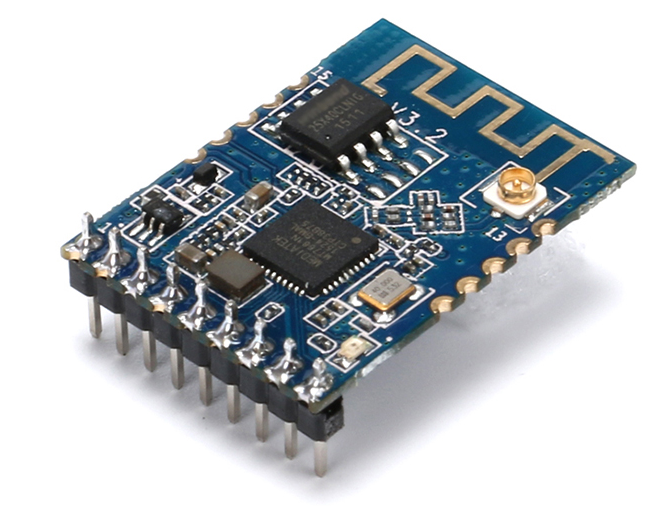The wireless data transmission module is a modular product of the data transmission radio station. It refers to a high-performance professional data transmission radio completed with DSP technology and radio technology. The use of digital radio stations has evolved from the earliest push-button telegraphs, telegraphs, imitation radio stations and wireless MODEMs to the current digital radio stations, DSPs, and software radios; the transmission signals have also evolved from codes and low-speed data (300 to 1200 bps) to high-speed data (N* 64K~N*E1), which can transmit events including remote control telemetry data, dynamic images, etc.
Wireless data transmission is widely used in vehicle monitoring, remote control, telemetry, small wireless networks, wireless meter reading, access control systems, community paging, industrial data collection systems, wireless tags, identification, non-contact RF smart cards, small wireless data terminals, security Fire protection systems, wireless remote control systems, biological signal networks, hydrological and meteorological monitoring, robot control, wireless 232 data communications, wireless 485/422 data communications, digital audio, digital image transmission and other fields.
Reduce costs
The establishment of wired communication means requires the erection of cables or the excavation of cable trenches, which requires a lot of manpower and material resources. However, the establishment of dedicated wireless data transmission means with wireless data transmission stations does not require the erection of cables or the excavation of cable trenches. Just connect a terminal to the wireless data transmission station and set up an antenna of appropriate height. In contrast, using wireless data transmission modules to establish a dedicated wireless data transmission method saves manpower and material resources, and the investment is quite economical.

Of course, in some short-distance data communication systems, wireless communication methods are not lower in cost than wired methods, but sometimes the actual on-site environment is difficult to wire, and customers will still choose wireless methods to complete communication based on the needs of the on-site environment.
engineering cycle
When long-distance sites that are several kilometers to tens of kilometers apart are to be connected and communicated with each other, using the wired method requires the erection of long-distance cables or the excavation of long cable trenches. This project cycle may take several months. time, and using data transmission modules to establish a dedicated wireless data transmission method, you only need to set up an antenna of appropriate height, and the project cycle only takes a few days or weeks. In contrast, the wireless method can quickly form a communication chain Road, the project cycle is greatly shortened.
Good adaptability
The limitations of wired communication are too great. When encountering some special use environments, such as special geographical environments such as mountains, lakes, and forest areas, or use environments with difficult wiring such as moving objects, the wired network will be affected. Cabling engineering has extremely strong constraints, and using wireless data transmission modules to establish dedicated wireless data transmission methods will not be subject to these constraints. Therefore, using wireless data transmission modules to establish dedicated wireless data transmission methods will be better and more extensive than wired communications. Its adaptability is simply not restricted by geographical environment.
Good scalability
After users form a communication network, they often add new equipment due to system needs. If you choose the wired method, you need to rewire the wiring. The construction is more troublesome and may damage the original communication lines. However, if you choose a wireless data transmission station to establish a dedicated wireless data transmission method, you only need to connect the new equipment with the wireless data transmission station. The expansion of the system can be easily completed by connecting with each other, and it has better scalability.